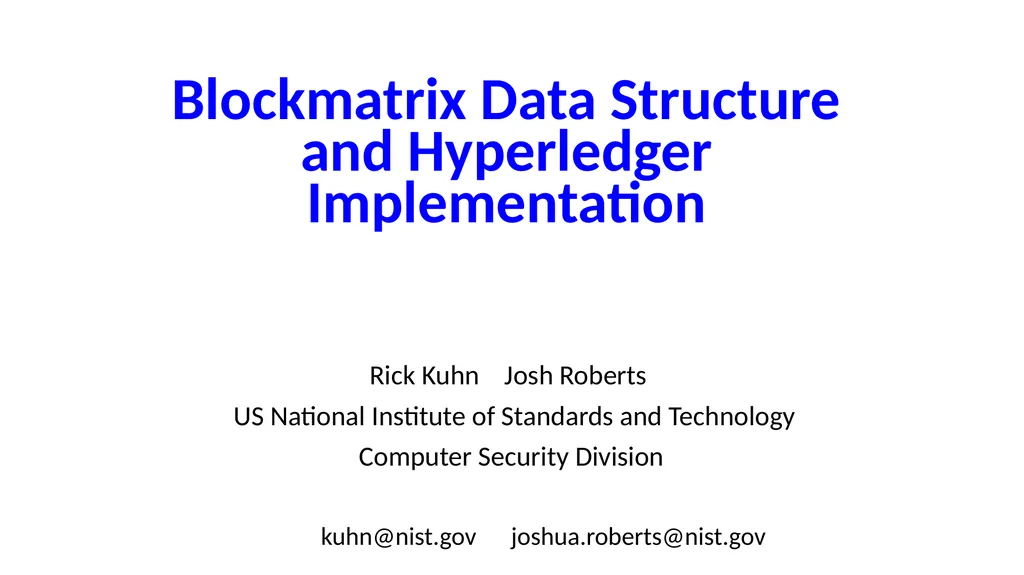Blockmatrix Data Structure and Hyperledger
Author : phoebe-click | Published Date : 2025-11-07
Description: Blockmatrix Data Structure and Hyperledger Implementation Rick Kuhn Josh Roberts US National Institute of Standards and Technology Computer Security Division kuhnnistgov joshuarobertsnistgov TLDR Summary of talk Blockchain has
Presentation Embed Code
Download Presentation
Download
Presentation The PPT/PDF document
"Blockmatrix Data Structure and Hyperledger" is the property of its rightful owner.
Permission is granted to download and print the materials on this website for personal, non-commercial use only,
and to display it on your personal computer provided you do not modify the materials and that you retain all
copyright notices contained in the materials. By downloading content from our website, you accept the terms of
this agreement.
Transcript:Blockmatrix Data Structure and Hyperledger:
Blockmatrix Data Structure and Hyperledger Implementation Rick Kuhn Josh Roberts US National Institute of Standards and Technology Computer Security Division kuhn@nist.gov joshua.roberts@nist.gov TL;DR Summary of talk Blockchain has valuable properties, but conflicts with privacy and exception management – can’t delete private data – can’t correct error entry Blockmatrix is a component for distributed database solutions; it is one design option, blockchain is another, choice depends on application needs Data structure called blockmatrix provides integrity protection of blockchain, but allows controlled edits for privacy, corrections Drop-in compatibility with Hyperledger Fabric Blockchain/distributed ledger could use a different approach for many applications Kuhn, R., Yaga, D., & Voas, J. (2019). Rethinking distributed ledger technology. IEEE Computer, 52(2), 68-72. Stavrou, A., & Voas, J. (2017). Verified time. IEEE Computer, 50(3), 78-82. Kuhn, R. (2018). A Data Structure for Integrity Protection with Erasure Capability. National Institute of Standards and Technology. Structure of a Traditional Blockchain Blockchain has been defined as "an open, distributed ledger that can record transactions between two parties efficiently and in a verifiable and permanent way". Why is deletion a problem for blockchains? Because it is supposed to be – change to one block changes hashes of all; provides integrity protection Hashes provide assurance that information in every other block is unchanged if one block is modified If we have to delete a block, hash values for others are no longer valid; requires entire new chain Don’t want to create a new chain Why is this a problem for applications? The permanence/immutability property that makes blockchain technology useful also leads to difficulty in supporting privacy requirements Privacy rules such as those of European Union General Data Protection Regulation (GDPR) requires that all information related to a particular person can be deleted at that person's request personal data, defined as "any information concerning an identified or identifiable natural person" - data for which blockchains are designed to be used "Personal data which have undergone pseudonymisation, which could be attributed to a natural person by the use of additional information should be considered to be information on an identifiable natural person." What is the rationale for blockchain properties? Blockchain and proof-of-work protocol were designed to solve the problem of double spending in cryptocurrencies. As with all design choices, blockchain properties have tradeoffs Proof of work provides an ordering guarantee, => at the expense of enormous processing time and expense Linked hash records provide trust













